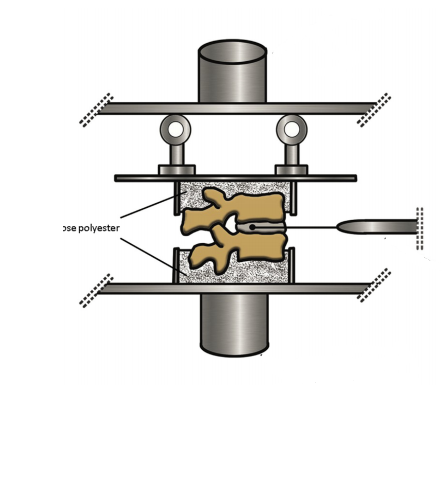Objective: The aim of this biomechanical experimental study was to evaluate the resistance of each posterior ligamentous complex structure of the thoracic and lumbar spine to compression forces and to measure the shifting load to the intervertebral disc when each PLC structure was interrupted.
Method: The study was conducted on 4 groups for thoracic and lumbar region as intact, supraspinous ligament interrupted, interspinous ligament/ligamentum flavum combination interrupted and facet joint capsule interrupted. Pre and post anterior vertebral body height, the highest compression force and pressure changes in the intervertebral disc during 40 N loading were measured.
Results: A significantly different degree of resistance to compression force was determined in each posterior ligamentous complex structure in the thoracic and lumbar spine samples. The combination of interspinous ligament and ligamentum flavum was found to be the most effective structure to resist compression forces (p ¼ 0.001 in both groups). The effect of the supraspinous ligament in thoracic and lumbar segments was found to be similar to that of the interspinous ligament and ligamentum flavum combination (p ¼ 0.008 and p ¼ 0.006, respectively). The least effective structure was observed to be the facet joint capsule. Compression forces were significantly increased in the intervertebral disc as a result of the disruption of supraspinous ligament (p ¼ 0.0032 and p ¼ 0.0029, respectively in thoracic and lumbar segments) and combination of interspinous ligament/ligamentum flavum (p ¼ 0.0019 and p ¼ 0.0021, respectively in thoracic and lumbar segments).
Conclusion: The interspinous ligament/ligamentum flavum combination and supraspinous ligament are the largest contributor to resisting applied compression moments in the sheep thoracic and lumbar spine. As a result of the loss of resistance to compression forces, there will be a shift of a great proportion of this force onto the intervertebral disc.
Level of evidence: Level V.



.png)
.png)

